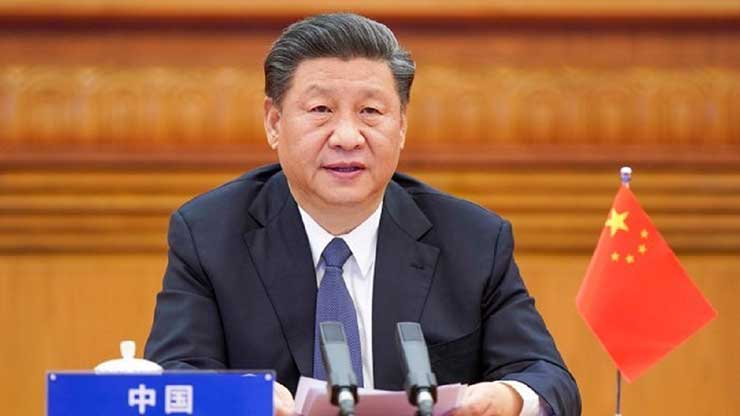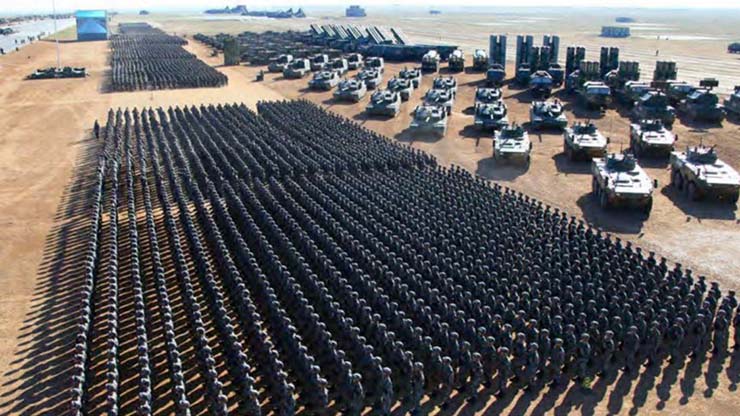
China has recently released two important documents to enunciate its position and future strategic direction. The Defence White Paper was released in July 2019, and the most recent Border Law was released in October 2021 (to come into effect on January 1, 2022). Similar to the existing Coast Guard Law and Maritime Traffic Safety Law, the Border Law is a causatum of the defence policy, specifying actions of its personnel on the land borders, and, importantly, reinforcing its aggressive posture. Should it be construed as a veiled warning to its neighbours?
What Do Both the Documents Say?
Defence White Paper
The white paper titled “China National Defense in the New Era” in July 2019, with the stated aim of explaining what China meant by “National Defense”, towards “building a fortified national defense and a strong military”.
The paper starts with a roundup of the International strategic landscape emphasising aspirations of developing nations to choose economic development over conflict, but at the same time denounces the development model adopted by the west, in particular, the United States. While painting a positive picture of the Asia –Pacific security situation (basically Chinese version of constructive partnership model), it picks on US, Japan and Australia, for being responsible for bringing instability in the region.
It reiterates growth in China’s national strength and stresses very distinctly that Taiwan and Tibet independence attempts (both allegedly under influence of foreign powers) are hindering peaceful reunification of the country embodied in the “One-China policy”; and is the biggest security threat (to be dealt with). Along with other western countries, India is rebalancing and optimising its armed forces, which impinges on Chinese military security and thus needs to be ‘confronted’.
China claims to follow a Defensive national defence policy. Defensive, defined as “crackdown” on Tibet independence movements and “contain” Taiwan independence attempts. China will resolve territorial disputes without any third-party intervention respecting “historical facts” (as presented by China). The defensive strategy includes the fact that China will not renounce the use of force (it will use it when necessary) and take all the required measures (diplomatic, economic and military) as decided by it, unilaterally.
The Chinese Military will follow the concept of “Active Defense”. In the event of an attack, China will attack to crush the immediate threat and will continue to attack till such time it decimates enemy’s ability to carry out future attacks. While doing so, its armed forces will not confine themselves to the affected area but will expand to the region in totality. Attack deeper to hit on adversary’s ability for future attack – “contain and win”, contained within the region but within it go all out to win. China’s armed forces will enhance their preparedness and combat capabilities to achieve this.
The Chinese Military will guard its borders against any encroachment and harassment. The country will deal with border issues at three levels – Defense Ministry, Theatre Command, and local (border) troops. On the border with India in the Doklam (area) standoff, the Chinese Military will take effective measures to create favourable conditions. Towards achieving the goals, training, which is the essential practice of armed forces in peacetime, will also include realistic training in actual combat conditions (at locations of expected conflict).
Border Law
The law formulated according to the Chinese constitution is non-negotiable. Borders are defined as boundaries (as defined by China) that demarcate them. These borders are sacrosanct and inviolable. The country will take necessary steps to safeguard the borders and crack down on any actions that destroy land borders. While various government departments have been tasked with different responsibilities regarding the borders’ management and security, the Central Military Commission is the central authority on all issues and policy matters.
Border defence construction (airfield, helipads etc.), infrastructure and support for border residents, is the state’s responsibility and will be promoted and adequately funded. Any treaty delimiting a land border shall be approved by the State Council and submitted to Congress for approval, which the President will finally approve. When and if delineation of the land border will happen with land neighbours, the State Council will approve the same. Joint inspection treaties with the neighbours would follow this. Boundary markers will mark the borders.
Chinese PLA and PAPF are tasked to carry out the defence, control and survey of the borders. They will also resolutely prevent provocation and maintain border security and stability. Civilians living close to the border will contribute towards border defence duties. China supports the construction of border towns, improve border town systems, functions and support (roads and other infrastructure will be created for all border towns). Anyone (and not only Chinese citizens) who violates the said law will be punished in accordance with Chapter VI of the law described above, which includes fine and imprisonment.
Implications for India
In the context of the ongoing China fomented border disputes and its continued opposition to an Indian proposition, it is abundantly clear that China is determined to dictate the terms of its borders. Towards this, it will take unilateral actions as deemed fit to ensure that effected countries abide by its perceptions and alignment of the border. India should not expect any leeway from China in border talks. Any such talks or meeting especially at the lower levels, are a ruse to keep India optimistic and international community unalarmed.
China does not approve of the military growth of India with Western assistance as it undermines its authority and expansion of its national power. Amongst many explicit reasons voiced for the slide in recent Sino-Indian relations, India’s incline towards the west is perhaps one of the main reasons. India’s stance towards China is more hostile and aggressive today, than any time in the past. India’s rejection of the Belt and Road Initiative (BRI) and recent participation in QUAD is seen as an aggressive manoeuvre, by China. China will therefore continue with its aggressive posture against India at all levels explicitly and implicitly; and take all steps which undermines the growth of India’s national power.
Military confrontation with India will be dealt with what it calls the concept of Active defence. The PLA will go full throttle within the affected region and will attempt to destroy Indian military ability for future confrontations. Also, China may not restrict its armed forces to the affected area but expand the conflict to other areas. Indian Military needs to factor this aspect in its future conflicts with PLA. If the Indian Military were to blunt attempts, PLA will amass a larger force and amplified combativeness, which the Indian Military needs to ready to deal with. PLA will also, continue to conduct large scale realistic military exercise in the regions close to the conflict zones. It will use live ammunition and elements of PLA Air Force. Conduct of realistic exercise is a clear indication that PLA sees these areas as future conflict zones; India should be thus prepared accordingly.
China will take adequate measures in situations like Doklam until the position is favourable to China. India’s de facto border with China, resulting in Line of Actual Control, is ambiguous and a prime target for China to take advantage of. India should thus expect PLA to dishonour the LAC at all locations. India needs to step up patrolling across the LAC with China and also amend its engagement rules to handle an aggressive PLA.
PLA will also attempt to place arbitrary boundary markers disputed regions and once created defend the same. Indian army has to prevent such occurrence at all cost and use adequate force if required.
Once formally adopted, the border law will be followed by all institutions and citizens of China once adopted. PLA will therefore not permit any permanent infrastructure in disputed sections of the Sino India border. However, while doing so, it will increase the tempo of building infrastructure at its side which primarily would include structure which will benefit the PLA in any military confrontation with India. Indian Military thus has to be prepared to defend such constructions against any such attempts, and factor continued interference from Chinese side on all installations across the LAC. It also has to be prepared for spurt in military infrastructure coming up on the Chinese side and prepare a strategy to tackle the same in its talks and negotiations.

Indian military personnel patrolling in disputed borders and Indian citizens living in border areas (under claim by China) can be arrested, detained and tried under the new Chinese border law since their actions will be perceived as illegal. Indian Army, has to plan and prepare for such an eventuality, both involving military and civilian personnel.
China will build border villages on its side of the international border and even at disputed areas (like the one in Arunachal near Doklam) with or without getting detected. Once created, these will be linked with roads and other infrastructure on the pretext of supporting Citizens. India needs to be ready with a strategy to deal with such situations both militarily and politically. It needs to augment its all-weather surveillance capabilities and ensure such attempts are nipped at the bud with minimum use of force; however, if force is required it should not shy away from using it.
Moving Forward
India is at a very precarious position vis-à-vis China and the situation got further complicated with Xi Jinping getting his third term extension. Recent aggressive posture adopted by India against China intended to reclaim the LOC favourably, is a step in the right direction. India’s China policy has to be a well thought and long-drawn affair, with no shortcuts, and most importantly, with a combination of diplomatic, economic and military actions. Treading the middle path, with various departments working in silos, surviving on the subjectivity of agreements and interpretation of the language, might have worked in the past; however, expecting the same strategy to work in future would be on the border of lunacy. Dealing with China is akin to ‘dealing with the devil’; India needs to act deliberately and meticulously at all levels while being ready to escalate at all times.
– The writer is voluntarily retired from active service after more than 21 years of commissioned service. He is an alumnus of Naval Academy (first course 10+2 X) and Defense Services Staff College and a specialist in Anti-Submarine Warfare. Presently, he is pursuing PhD in Defense Industrialization and Exports (India) from Indian Institute of Foreign Trade (IIFT). New Delhi. The views expressed are personal and do not necessarily reflect the views of Raksha Anirveda.








